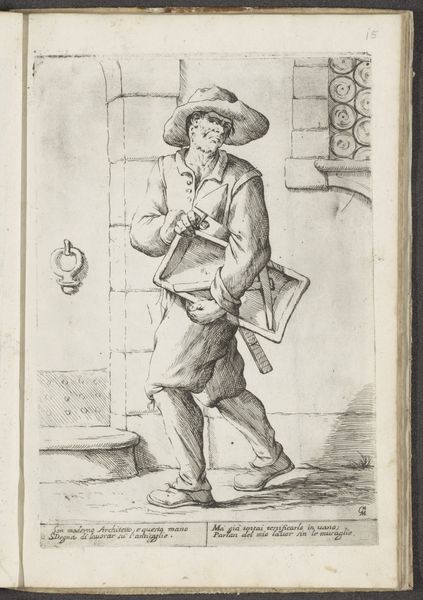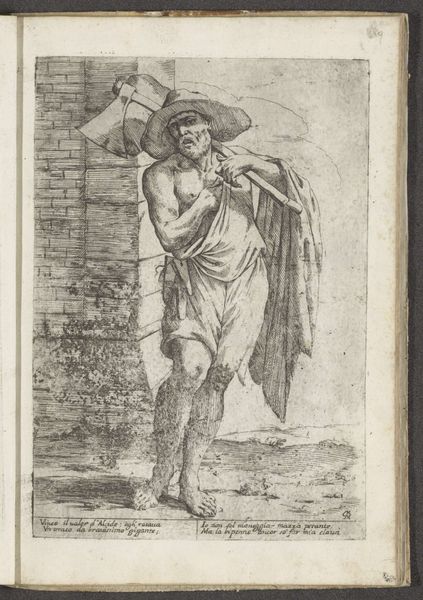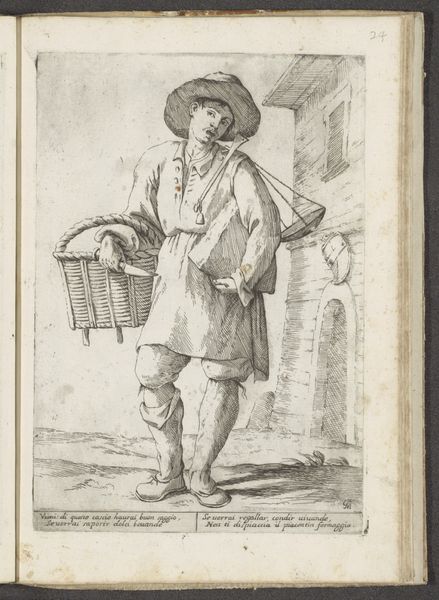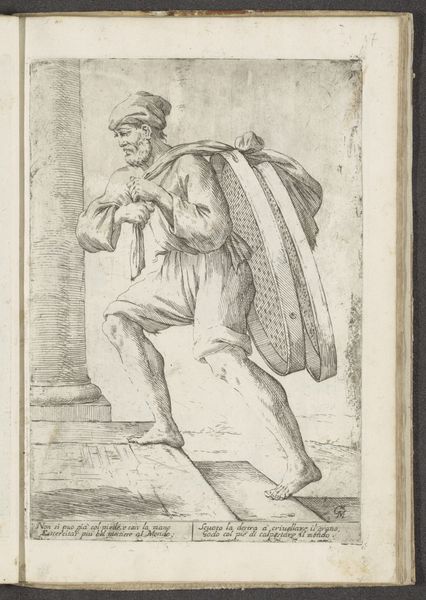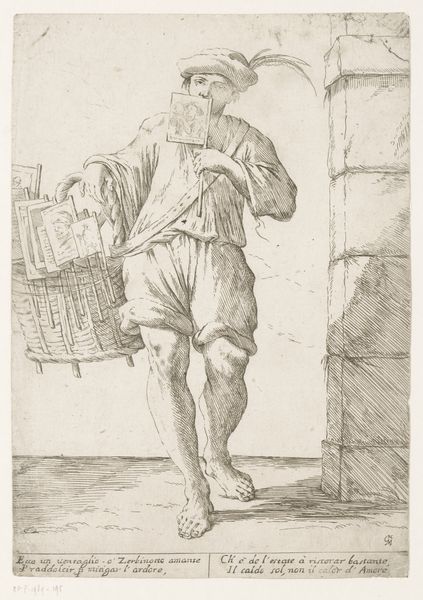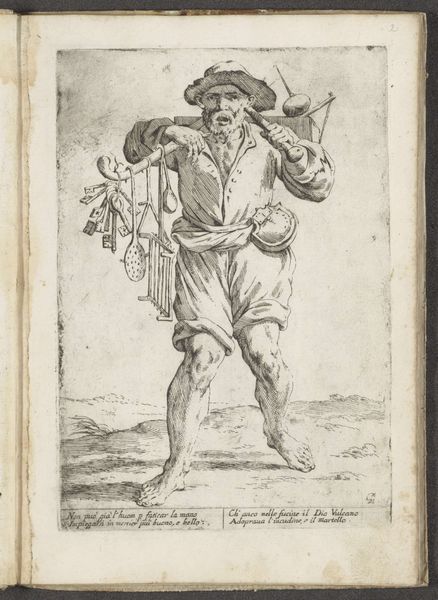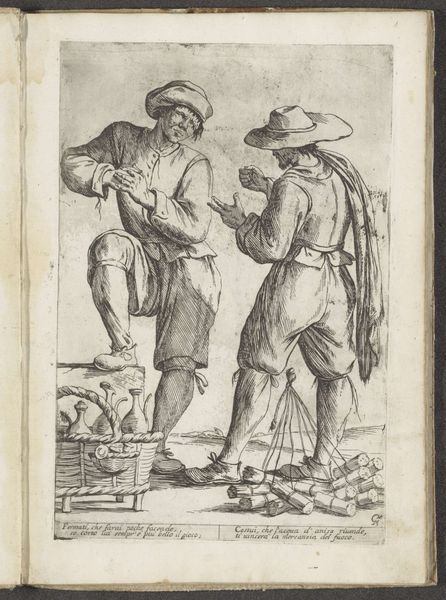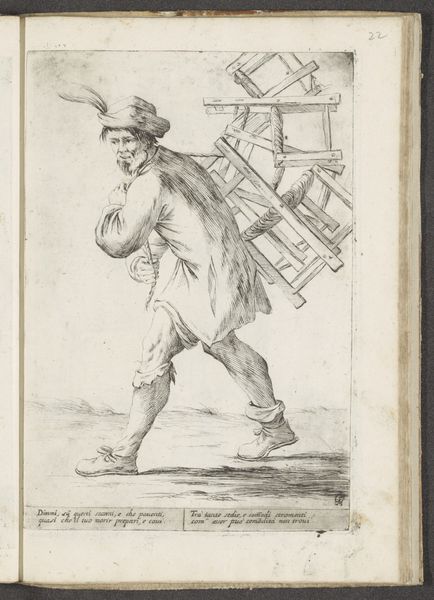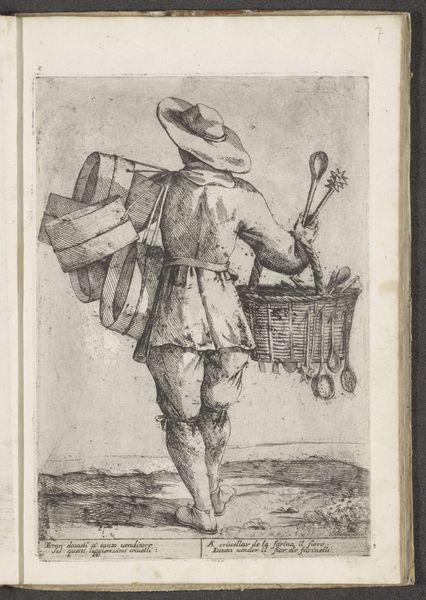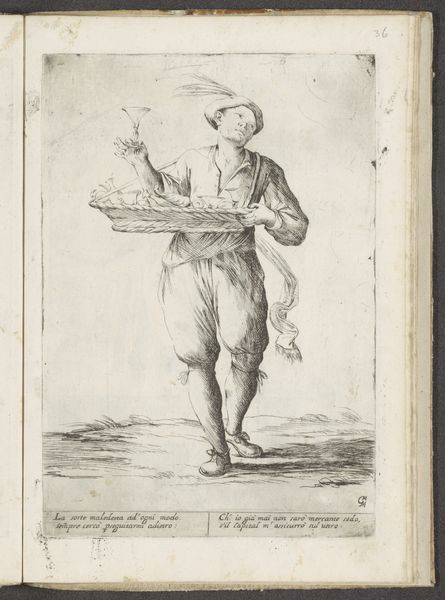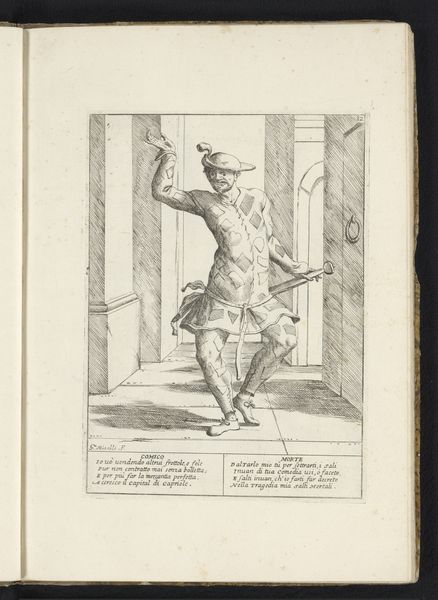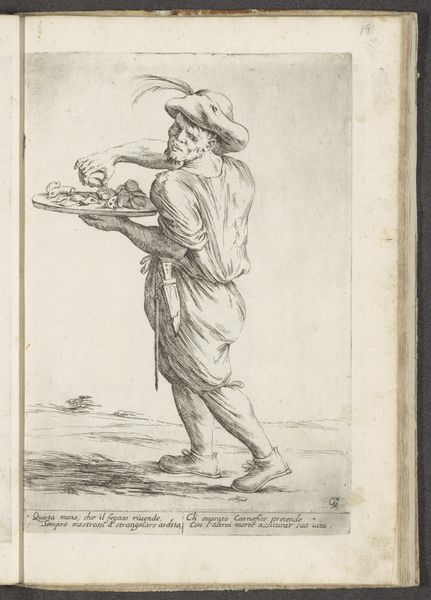
drawing, print, paper, ink, engraving
#
drawing
#
baroque
# print
#
figuration
#
paper
#
ink
#
genre-painting
#
engraving
Dimensions: height 280 mm, width 195 mm
Copyright: Rijks Museum: Open Domain
Curator: This is "Verkoper van vlaggetjes of waaiers," dating back to 1660, crafted by Giuseppe Maria Mitelli. The medium is a layered combination of drawing, print and engraving on paper, accentuated with ink, and is currently held at the Rijksmuseum. Editor: It feels immediately Baroque in its style— the dynamism, and the somewhat idealized depiction of this commoner. The shading around the pillar is quite stark. What stands out to me the most are the vendor’s bare feet. Curator: Mitelli was known for genre scenes like this. We're essentially seeing an early form of street vendor. It’s fascinating to think about the printmaking process itself – the labour involved in creating multiples of this image, potentially disseminated widely throughout the city. These weren't just artworks; they were commodities themselves. Editor: And those flags or fans… they aren't just decorative. Notice the imagery. They could depict popular figures, heraldic symbols, or even political satires. The act of buying one becomes a small participation in that visual culture. What is he obscuring his face with? I wonder if it is strategic; concealing your countenance during commerce? Curator: Good point, perhaps it provided him with anonymity in these transactions, and protection from weather. I would also suggest to our listeners to observe closely at his feet: consider his social standing. The details really showcase how prints blurred the line between "high art" and everyday life, highlighting labour and class in ways other media didn't. Editor: This era loved using objects to represent abstract concepts. That small flag he holds to his face perhaps isn't a flag at all, but a subtle symbol, a clue to unlock the scene's hidden meanings, what is truly being bought and sold, beyond material things... Curator: And what do we make of the column that provides context here? Editor: Columns signify societal stability, permanence but are commonly used in the portrayal of royalty or higher authority; but notice this one appears unfinished, possibly undercutting this narrative; again making reference to the figure in question who himself has no 'soles.' Curator: A striking piece then, a testament to both artistic skill and the power of printed images to shape perceptions of class and commerce. Editor: Exactly. It really demonstrates the cultural currents flowing beneath the surface of seemingly simple street scenes. It provides the viewer of our time with an historical framework.
Comments
No comments
Be the first to comment and join the conversation on the ultimate creative platform.
